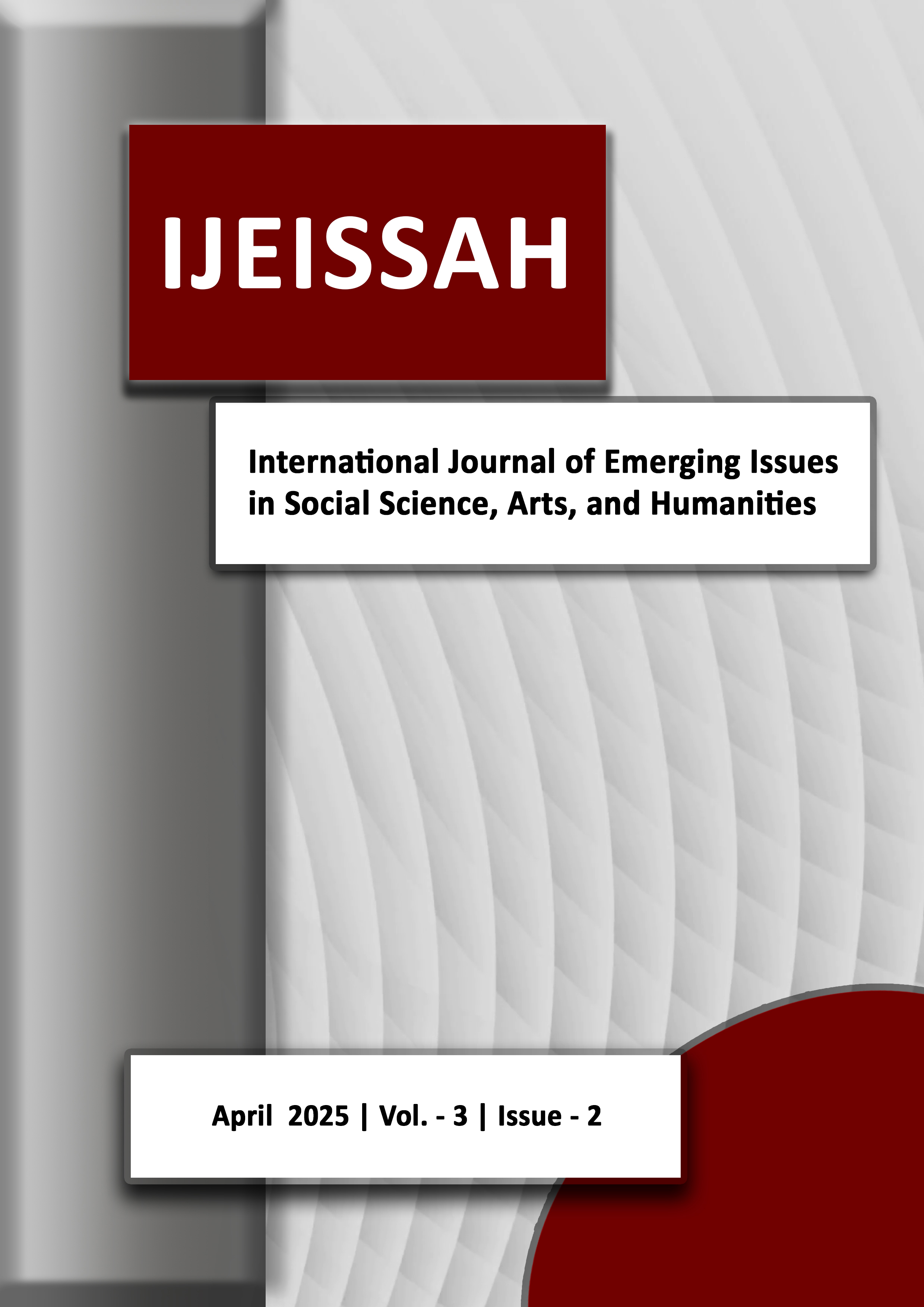Empathetic Narrative and Enigmatic Scarring Events in “The Color of Our Sky”: A Study of Cultural Concussion and Collective Identity
DOI:
https://doi.org/10.60072/ijeissah.2025.v3i02.008Abstract
The Color of Our Sky by Amita Trasi is a striking piece of narrative empathy with enigmatic scarring events that shakes the reader. The societal trauma that has led to Indian outcasts, particularly Bagnios, seeing their traditions as a threat to their core collective identities, was clarified by this book. The horrifying and gloomy conditions that the Indian outcasts endure leave a lasting effect on the readers. The story fleshes out the people on both sides of the fight, bridging cultural divides and promoting empathy. The unsettling story of events portrays the terrible circumstances that the queen of India are enduring. In The Color of Our Sky, the idea of the caste system in India is examined, along with the extent to which it moulds people's lives. That is what gave rise to Mukta. Her caste was lower than others, and the women in it commit their lives to becoming the goddess' consort. The concepts of empathetic narrative, collective identity, cultural concussion and trauma will have been used to study this work of fiction. The theories of cultural concussion and collective identity will have been utilized to analyse the text under debate. The researcher will try to use critical analysis techniques to look into the distressed work of this fiction through the concept of narrative empathy.
Keywords:
Collective Identity, Cultural Concussion, Cultural Trauma, Empathy, Empathetic Narrative, Narrative Empathy, TraumaReferences
Alexander, J. C. (2004). Toward a theory of cultural trauma. Cultural trauma and collective identity, 76(4), 620-639. DOI: https://doi.org/10.1525/9780520936768-002
Gay, R. (2014). An Untamed State (No. 16). Grove Press.
https://study.com/academy/lesson/what-is-collective-identity-definition-theory- examples.html#:~:text=Collective%20identity%20refers%20to%20a,that%20goes%20beyond%20the%20person.
https://www.oreilly.com/library/view/empathy-at-work/9781492050483/ch01.html
Keen, S. (2015). Intersectional narratology in the study of narrative empathy. Narrative theory unbound: Queer and feminist interventions, 2015, 123-146.
Morrison, T. (1987). Beloved. Alfred A. Knopf. https://ieas-szeged.hu/downtherabbithole/wp-content/uploads/2020/02/Toni-Morrison.-Beloved.pdf
Spreng*, R. N., McKinnon*, M. C., Mar, R. A., & Levine, B. (2009). The Toronto Empathy Questionnaire: Scale development and initial validation of a factor-analytic solution to multiple empathy measures. Journal of personality assessment, 91(1), 62-71.
DOI: https://doi.org/10.1080/00223890802484381
Stepien, K. A., & Baernstein, A. (2006). Educating for empathy: a review. Journal of general internal medicine, 21, 524-530. DOI: https://doi.org/10.1111/j.1525-1497.2006.00443.x
Stiegler-Balfour, J. J., Jakobsen, K. V., Stroud, M. J., & Daniel, D. B. (2020). APA-style citations can create a roadblock to textbook comprehension for less skilled readers. Teaching of Psychology, 47(2), 147-155. DOI: https://doi.org/10.1177/0098628320901384
Toremans, T. (2003). Trauma: Theory–reading (and) literary theory in the wake of trauma. European Journal of English Studies, 7(3), 333-351. DOI: https://doi.org/10.1076/ejes.7.3.333.27981
Trasi, A. (2018). Il colore del nostro cielo. Giunti.
Yuknavitch, L. (2020). The Small Backs of Children. Canongate Books.
























